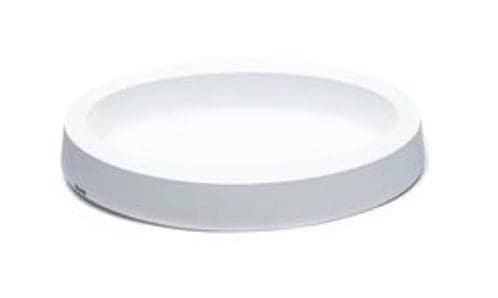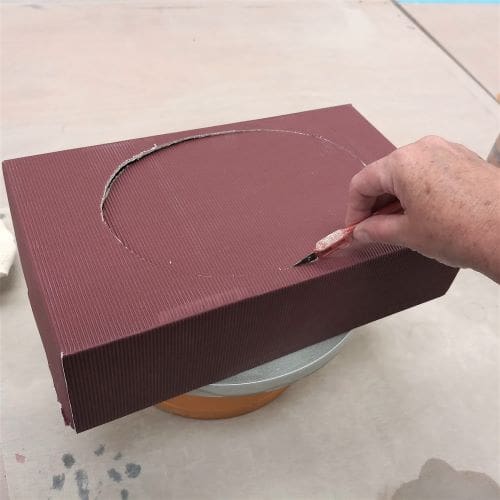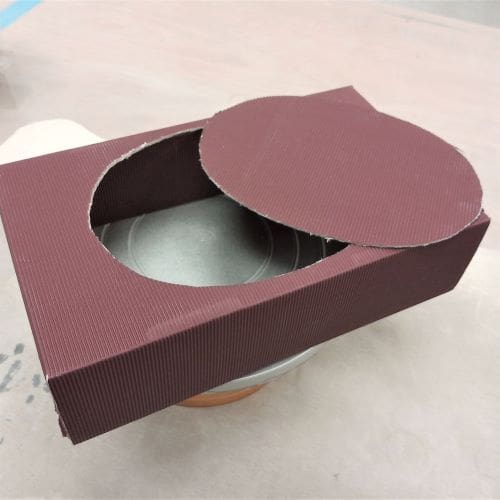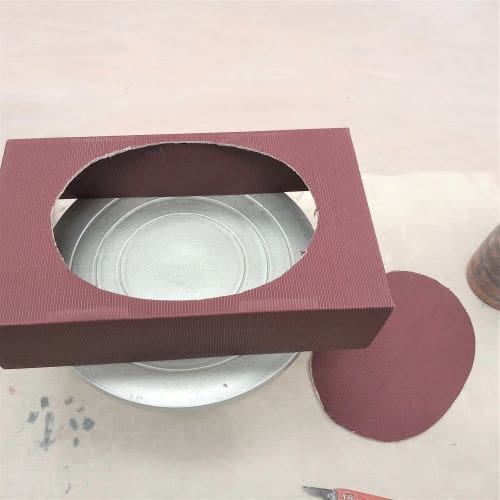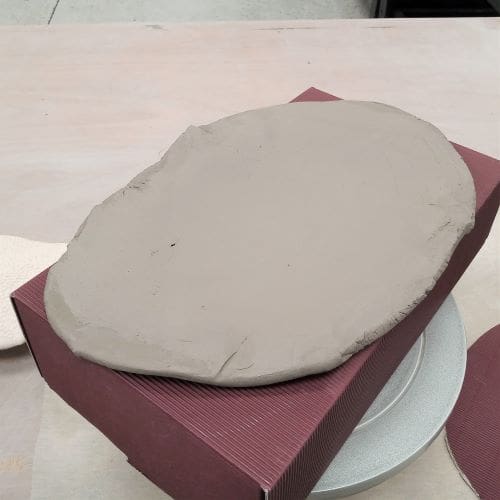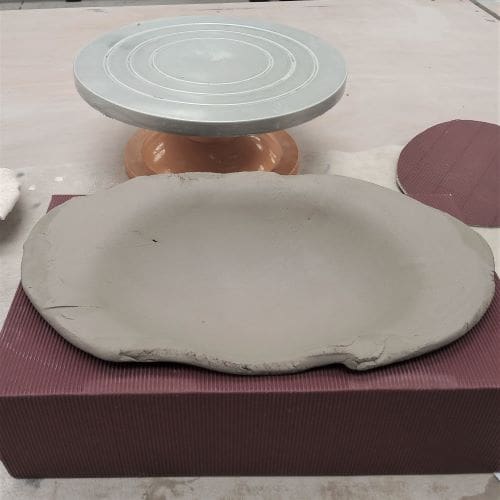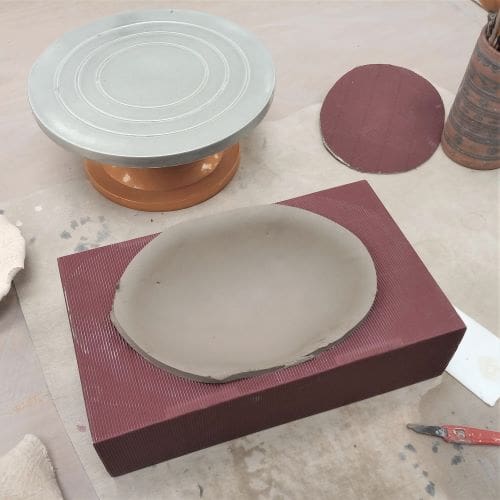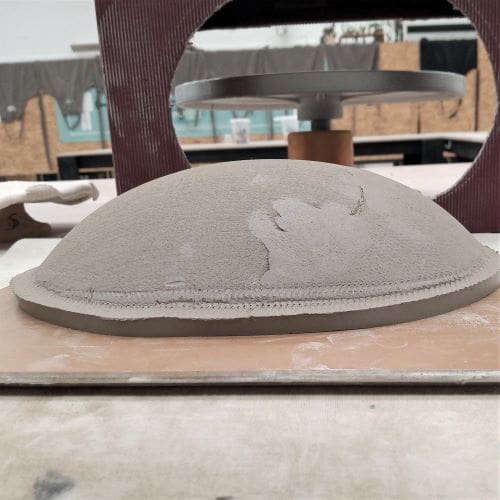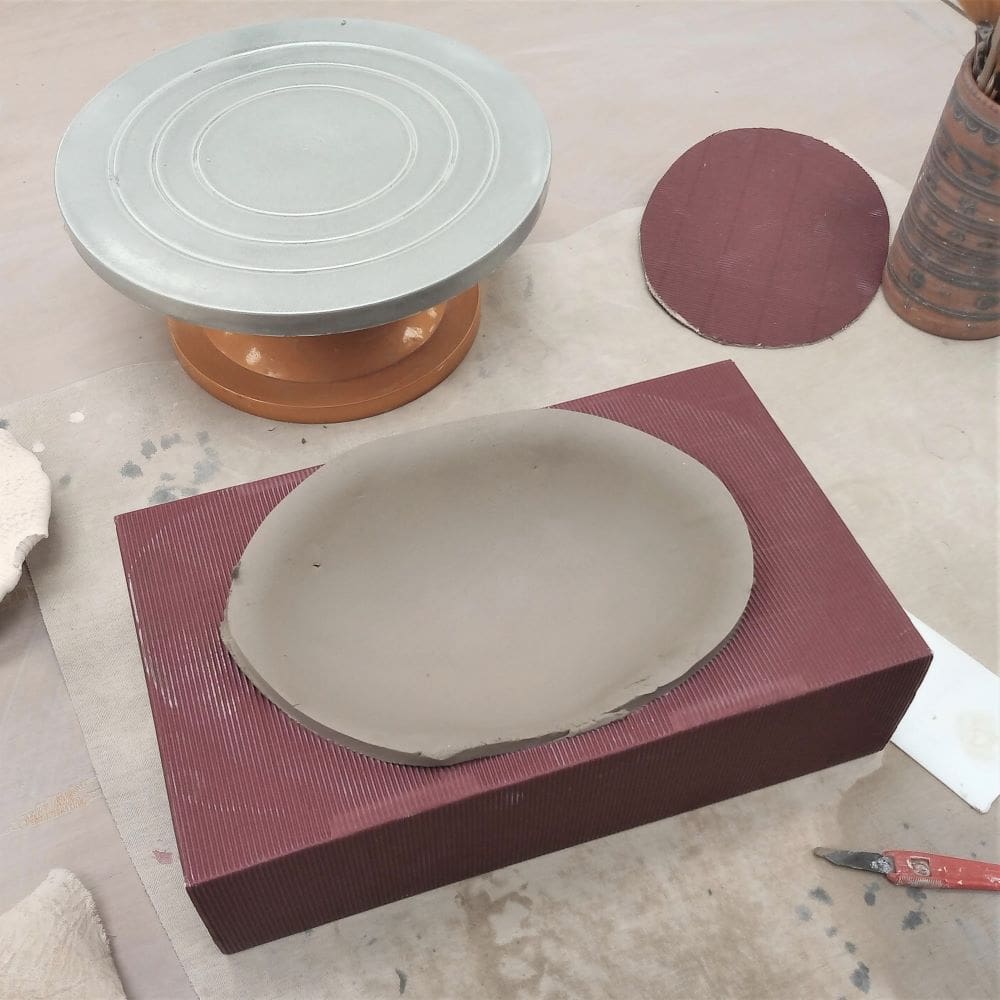
Slump mould? This is an obvious term for a hand-building potter but may raise a few eyebrows in the uninitiated. I will first explain, then I will share with you a cheap & cheerful method to make a home-made slump mould.
Slump mould
This is a concave mould, like the shape of the inside of a bowl, intended to take the clay inside the curve of the mould.
Usually in a pottery studio, a slump mould is made from plaster of Paris. The clay can be put into the mould as a rolled-out slab or as balls, spirals or strips of clay.
The inside surface of the slab form is exposed, allowing it to be decorated with underglaze, slip or impressed marks
The outer face of the slab is in contact with the mould, which will shrink away from the plaster of Paris as the clay dries.
Homemade slump mould
This is my version of a homemade slump mould …
You will need a strong cardboard box & a sharp knife (plus of course your clay!)
Draw the shape of the rim onto the box – in this case I am going for an oval rim – and cut aound the shape with a sharp knife.
Then place a rolled out slab of clay over the cut-out opening …
Pick up the box and drop it from about 15cm away from the table, the clay should slump slightly into the hole … keep dropping it until the clay has reached the depth you want.
Finally, trim the excess clay from around the rim …
Ant turn out the completed form onto a board to dry.
My next blog will be about a homemade hump mould …

